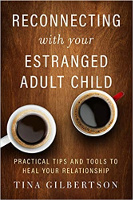
Image by Free-Photos
The price of positive change is fear. Several different species of fear may crop up in the attempt to change how you communicate.
Let’s look at the fears that might show up when you consider adopting a clear, direct communication style.
1. Fear of being vulnerable
Open and honest communication requires us to expose our true thoughts and feelings. Once those are out of our mouths, they can be criticized, ridiculed, or rejected.
When we’re not used to being vulnerable, it seems safer to stay a little closed off, and even to be vague at times in what we say. Without built-in deniability, we feel like sitting ducks.
2. Fear of conflict
What if we say something that someone else disagrees with? Or worse, what if it hurts or offends someone to hear what we have to say? Expressing ourselves clearly and directly invites the last thing most of us want in our lives: conflict.
Fear of conflict is as common as conflict itself. That’s probably because we humans can be pretty bad at managing it. But conflict is a necessary part of relationships. It’s born out of different people having different points of view, which is inevitable. We can learn to tolerate conflict by coming through it repeatedly without lasting damage.
3. Fear of the unknown
What would happen if everyone owned and openly expressed their thoughts and feelings? Who knows?
Familiarity is a balm, even when our familiar patterns of communication are not the best way, or even the easiest. But for parents with estranged adult children, those familiar ways of communicating are often part of the problem.
There comes a point when the fear of the unknown starts to be eclipsed by the fear of things staying as they are. Estrangement can create such a turning point.
4. Fear of intimacy
Those of us who don’t like to let others get too close may feel threatened by the idea of using clear and direct communication ourselves, even if we appreciate it in others. Sharing our true thoughts, feelings, and needs is akin to letting a listener get to know our real selves. And many of us have an unconscious habit of keeping ourselves hidden unless we know we’re safe from judgment or personal attacks.
Intimacy is closely related to vulnerability. If we let people know us, they’ll see our flaws, and those can be used against us. When it comes to sharing yourself with your estranged adult child, you will want to think carefully about what to share, when, and how. But having the will to overcome fears of intimacy and vulnerability will give you the maximum flexibility and effectiveness.
Developing New Skills Through Therapy
Even for people who pride themselves on good communication, there’s truly always room for improvement. A therapist can offer emotional safety, boundaries, and gentle corrections as you all develop new skills together. If you can’t get your estranged child to go with you, take whoever you can. Even if they don’t join you in the therapy room, estranged children can learn about clear, direct communication from every interaction with you, no matter how infrequent it may be.
To communicate better, most adults (at least in the United States, where I live) could use an increased vocabulary of feeling words. If you mostly use either happy or frustrated to indicate good and bad feelings, respectively, aim to add another word each week, and start using the new ones as often as you can.
A feelings vocabulary is simple to develop. However, it can be hard to put into practice because of long-standing, unspoken rules against expressing certain emotions. Again, therapy can help. But only you can supply the courage to apply these skills.
Sharing Ourselves
Sharing how we really feel with important others invites them to know us better. It also encourages them to share their own feelings with us. Sharing and respecting each other’s feelings helps develop trust and can reduce misunderstandings, especially when everyone takes ownership of their own emotions.
But it’s not easy to own your feelings, particularly negative ones, in a society where emotional literacy often isn’t valued or practiced. Many children grow up not knowing the names of most feelings, let alone how to own them or express them appropriately. When they eventually have kids of their own, they can’t teach them what they themselves never learned. This is how emotional illiteracy, like estrangement, gets passed down through generations.
Developing a rich vocabulary for feelings through emotional literacy helps us make sense of ourselves, makes us feel more normal and acceptable, and gives us something meaningful about ourselves to share with important others.
Friends, family, parents, and children can form strong bonds by sharing emotions effectively. Feelings seem chaotic and dangerous mostly when we don’t have words for them. A lack of ability or willingness to communicate about and through emotions hampers bonding.
Acting Out
Without being able to share feelings like anger or disappointment, or to express them in a way that preserves and enhances relationships, family members end up acting them out instead of expressing them in a reasonable, balanced way.
Feelings need to be experienced to be resolved, but acting them out is an inefficient and troublesome way to do that. Acting out is the opposite of taking ownership of feelings.
Here are some examples of acting out feelings, instead of simply feeling them:
- eating to suppress despair or anxiety
- driving aggressively out of frustration
- bullying others to escape feelings of inadequacy
- overachieving because of insecurity
- giving too much to avoid feeling guilty
- undermining a coworker out of resentment
Acting out feelings instead of finding healthy ways to experience and express them creates problems in our lives. For one thing, it does nothing to address the cause of the feelings. For another, those actions can have adverse physical, psychological, social, and emotional consequences.
If you came from a family that didn’t express emotions well or at all, say it with me: “There’s no shame in that. It’s not my fault. It’s not even my parents’ fault.”
Most families, including mine and perhaps yours too, don’t do emotions well. What we call family dysfunction almost always involves some degree of emotional illiteracy. Fortunately for all of us, it’s possible to cultivate this relationship-enhancing skill in adulthood.
Reprinted with permission of the publisher,
New World Library, Novato, CA. ©2020 by Tina Gilbertson.
www.newworldlibrary.com or 800-972-6657 ext. 52.
Article Source
Reconnecting with Your Estranged Adult Child: Practical Tips and Tools to Heal Your Relationship
by Tina Gilbertson.
 Parents whose adult children have cut off contact wonder: How did this happen? Where did I go wrong? What happened to my loving child?
Parents whose adult children have cut off contact wonder: How did this happen? Where did I go wrong? What happened to my loving child?
Psychotherapist Tina Gilbertson has developed techniques and tools over years of face-to-face and online work with parents, who have found her strategies transformative and even life-changing. She cuts through the blame, shame, and guilt on both sides of the broken relationship. Exercises, examples, and sample scripts empower parents who have felt powerless. The author shows that reconciliation is a step-by-step process, but the effort is well worth it. It is never too late to renew relations and experience better-than-ever bonds.
Click here for more Info and/or to Order this Book. Also available as a Kindle edition and as an Audiobook.
More books by this author
About the Author
 Tina Gilbertson, MA, LPC, is a licensed professional counselor specializing in family estrangement. She has been quoted in hundreds of media outlets, including Fast Company, the New York Times, the Washington Post, the Chicago Tribune, and Real Simple.
Tina Gilbertson, MA, LPC, is a licensed professional counselor specializing in family estrangement. She has been quoted in hundreds of media outlets, including Fast Company, the New York Times, the Washington Post, the Chicago Tribune, and Real Simple.
She hosts the Reconnection Club Podcast.
Read Tina's estrangement-focused blog posts at reconnectionclub.com/blog.



























